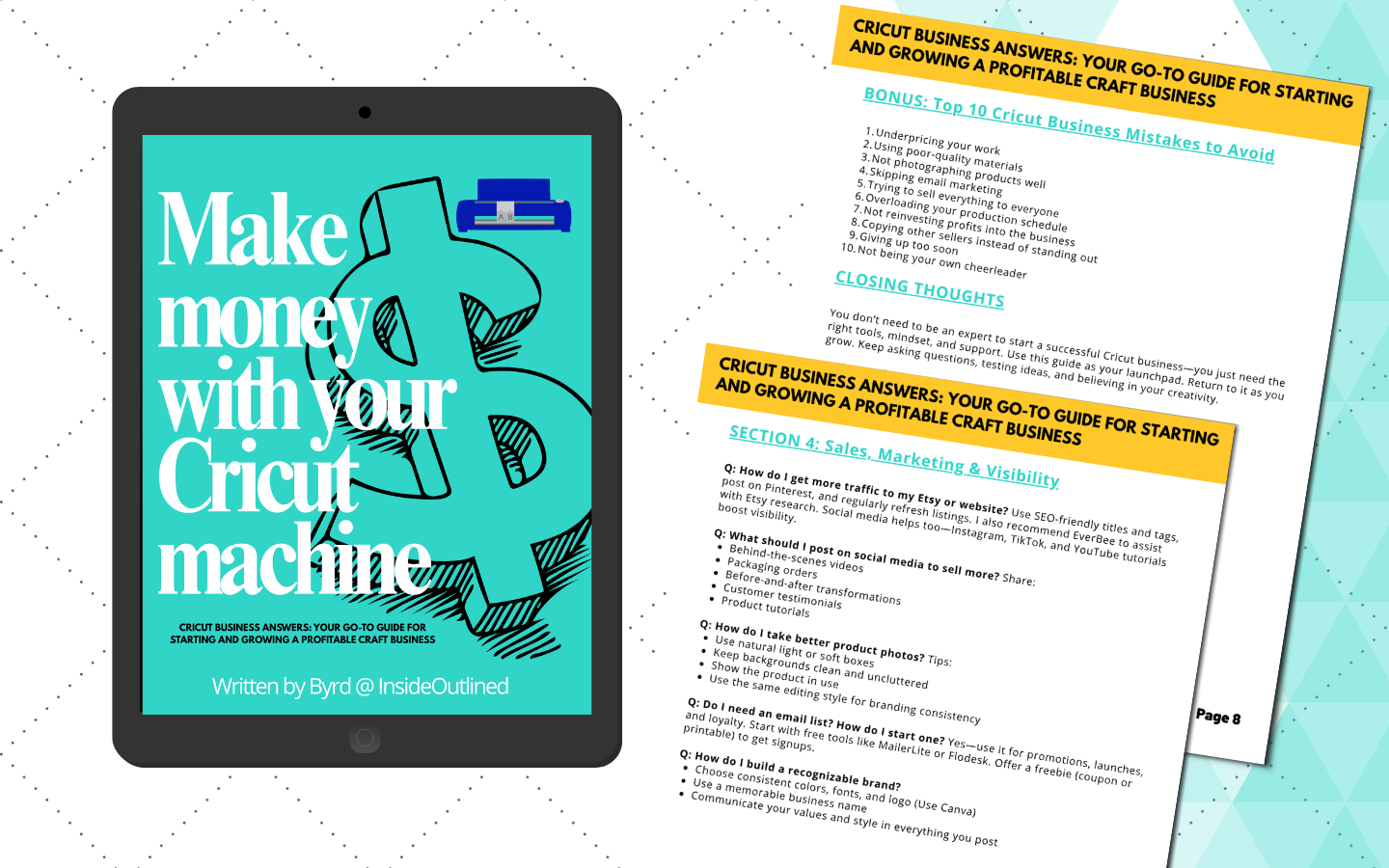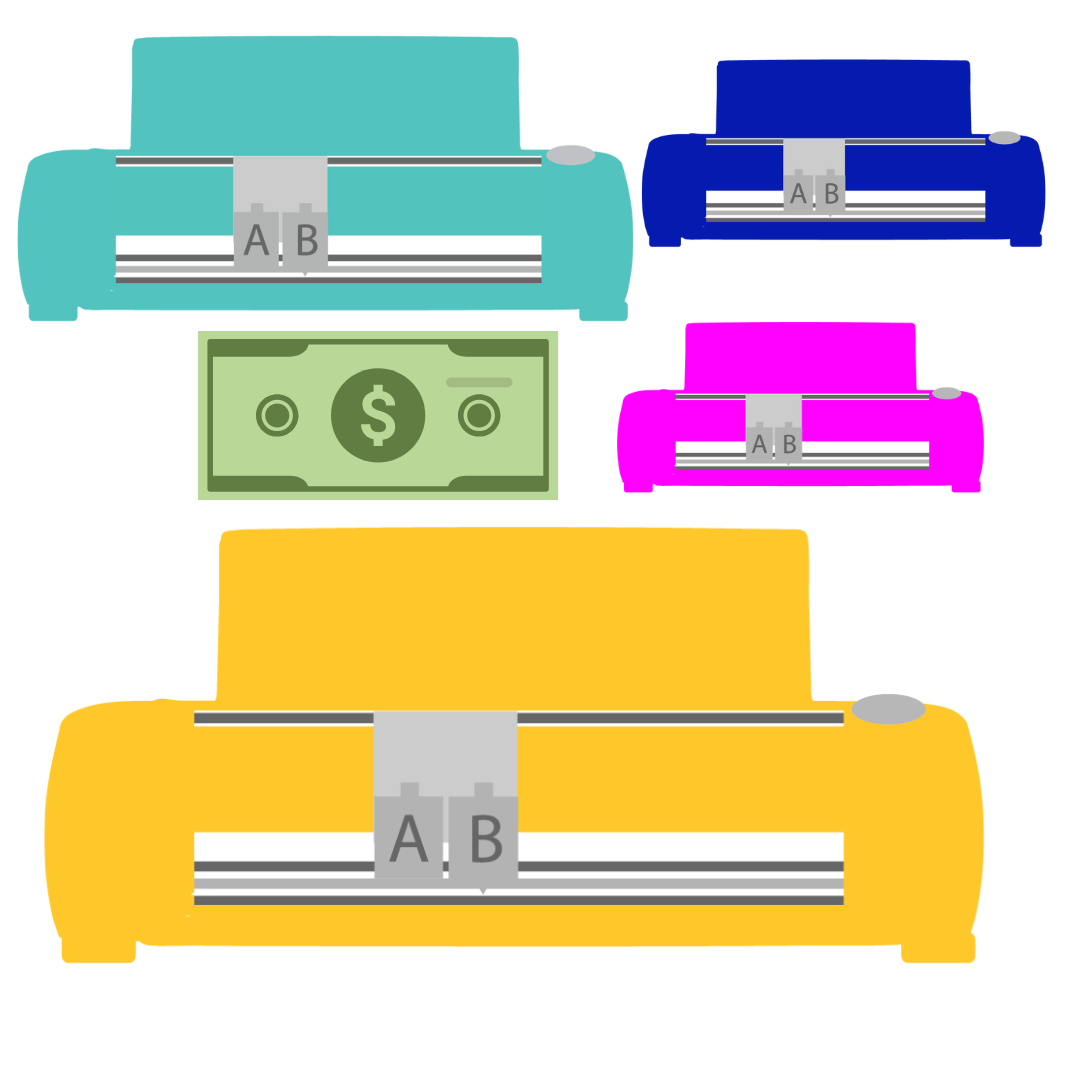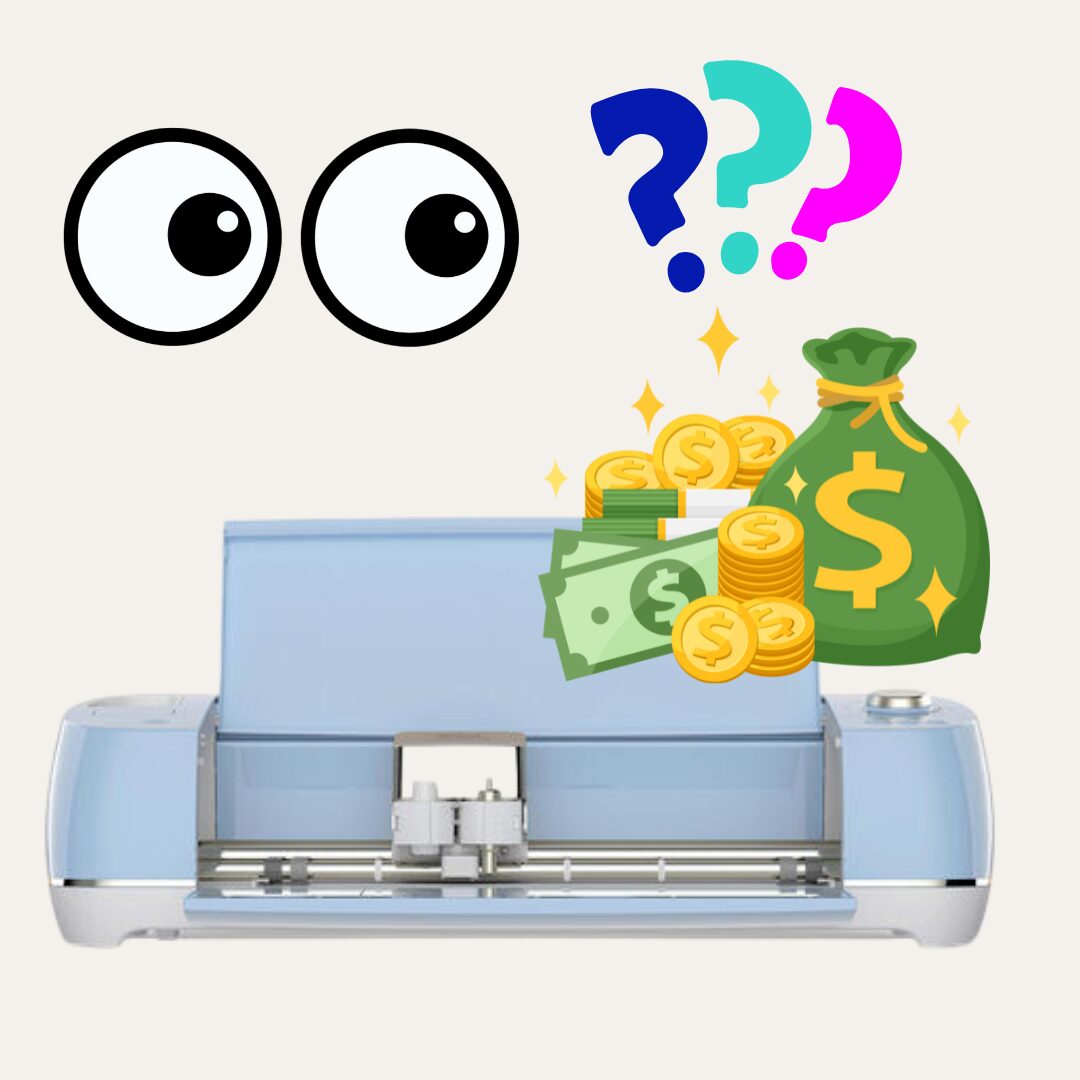This post may contain affiliate links. This means if you click a link and purchase an item that I recommend, I will receive an affiliate commission at no extra cost to you. All opinions are my own.
If you want to quickly get started making money with your Cricut machine, keep reading.
As a Cricut Business Launch Coach, I advocate for Cricut users to legitimize their Cricut businesses so they can make big money and take advantage of tax deductions.
If you’re operating a side hustle making money under the table, that only works for so long until you want to start getting the big dollars. And to get the big dollars, you need to legitimize your Cricut business.
I also know that there are many Cricut users who just want to quickly start selling items to make money with their Cricut machines and this article is for them.
To start making money with your Cricut you need to determine what products to sell, determine your expenses and income, set a profit goal, set up order intake and payment processes, and market/get the word out. I go into more detail on each below:
Jump to Sections in this Post
Determine what products to sell
- Determining what products to sell will determine how much money you can make with your Cricut machine. In this phase, you will likely have some ideas of what you would like to create.
- You probably will experiment with some projects and determine that you don’t enjoy making those projects. You may find that other projects that you do enjoy making, take way too much time and are not worth it.
- In this phase, you want to decide on Cricut projects that you enjoy creating, don’t take up a lot of time, and have high-profit potential.
Determine your expenses and income
- After you know what you want to create, you can then start looking for places to get the best quality products at the lowest price. You will do this because you want to keep your expenses low and your income high.
- Once you add up all the expenses (supplies, packaging, shipping, time), you can determine how much you want to sell your Cricut projects for and then calculate your income. Check out my Cricut Pricing Spreadsheet.
Determine your profit goal
- Profits are the money left over after all expenses are paid. This is the money you get to spend freely from your business. It’s important to determine a profit goal so you can have an ideal number in your head that you want to reach.
- If you don’t set a goal, you’re just selling or not selling, aimlessly. When you set a profit goal, you can determine how many of each product you need to sell to hit your goal. I talk more about this in my Cricut Business Launch Playbook.
Set up order intake and payment processes
- If you don’t have a website or an Etsy shop, I am a strong advocate for setting up an online process where customers can input their order information. This allows customers to submit their information and allows you both to have a copy of the submitted information.
- Jotform is a tool that I recommend using if you want to hurry up and start making money with your Cricut and you don’t have an online presence. This tool is similar to Google Forms, but 10 times better.
- I also recommend setting up payment processing accounts with platforms such as PayPal, Square, Stripe, Venmo, etc. When you have a platform set up in advance, it allows you to provide options to your customers, making it a seamless process.
Market/Get the word out
- Regardless of if you have a legit Cricut business or not, you will need to market your products to potential customers. It’s best to have an idea of your target customers (I talk more about this in my Cricut Business Launch Playbook) so you can market to them using social media and online ads. Without an online presence, the best way to market and get the word out about your business will be through word of mouth and networking.
This article is just a high-level overview of what it takes to quickly start making money with your Cricut. As your business grows, you will need to get serious about it and start putting in the right processes.
You will also need tools and resources to guide you step-by-step along the way.







